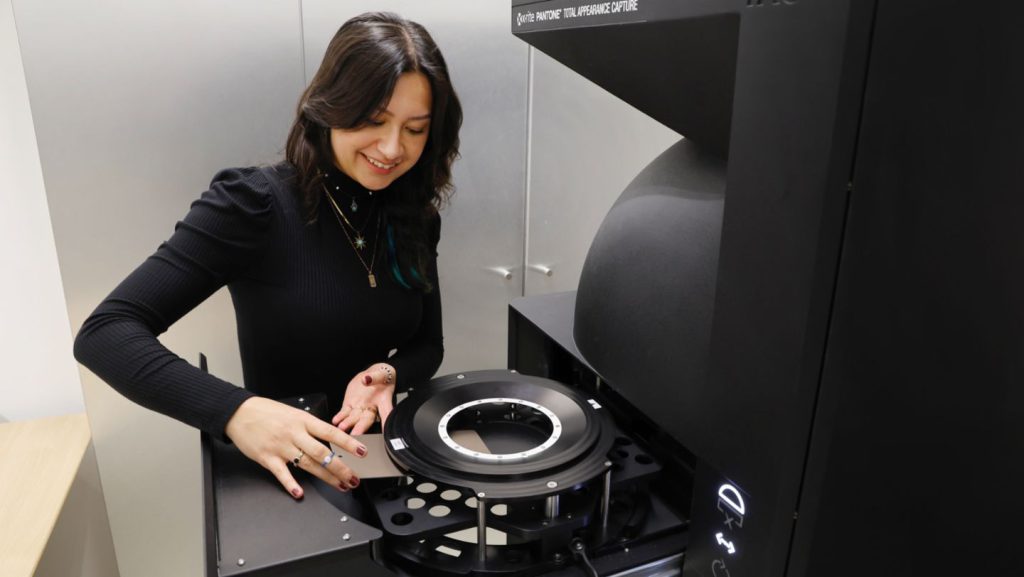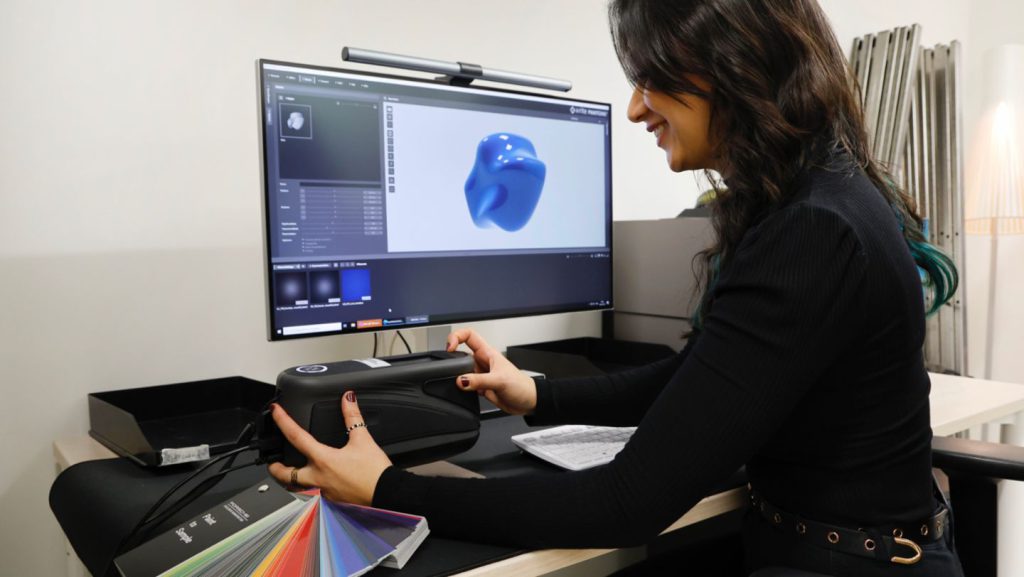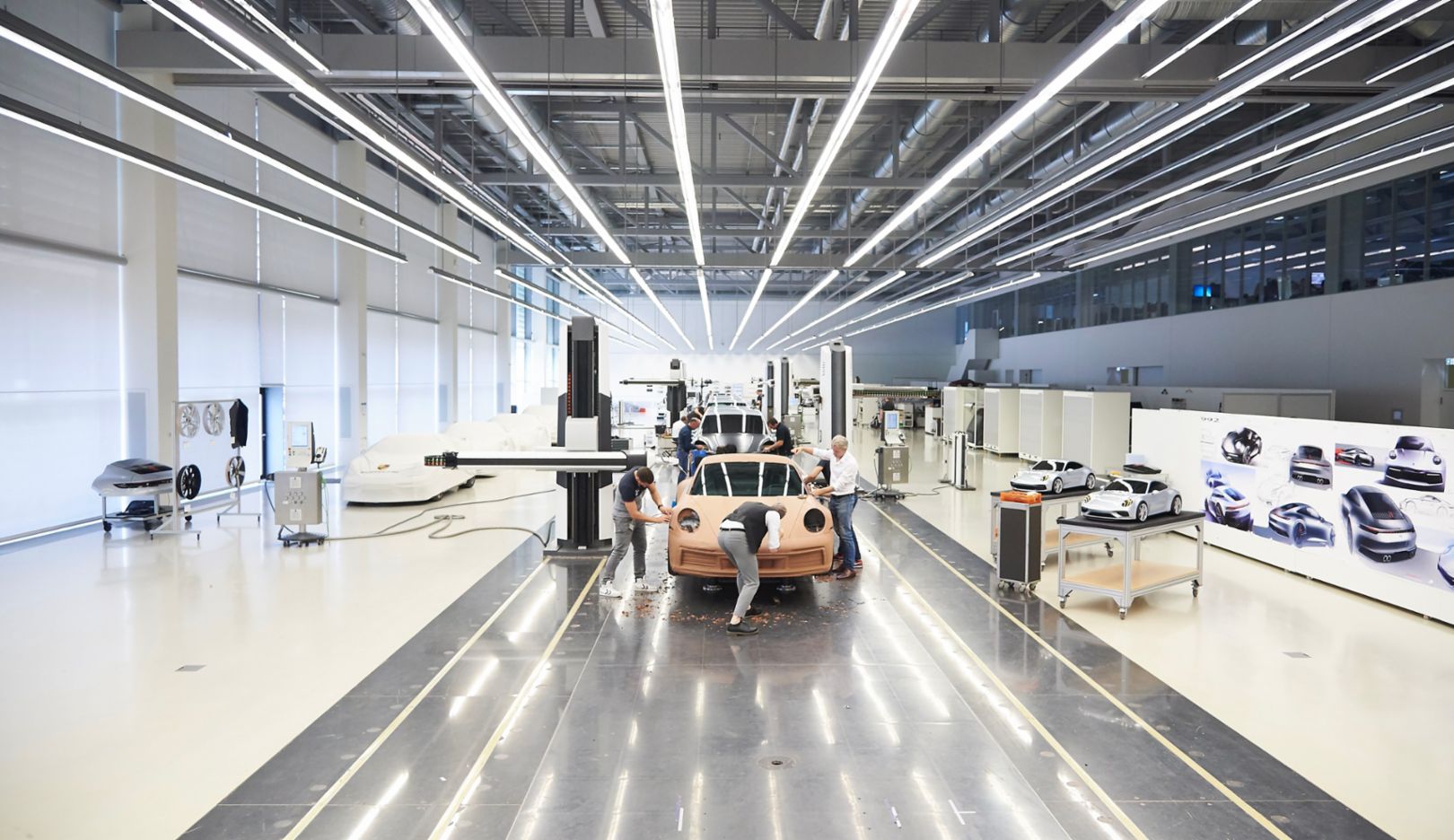The Art of Innovation
In the fast-paced world of automotive design, Porsche stands out by embracing a hybrid design process which marries traditional craftsmanship with cutting-edge technology. This approach allows the legendary car manufacturer to uphold its design heritage while pushing the boundaries of innovation.
The Hybrid Design Process: A Balance of Tradition and Technology
Porsche’s design philosophy revolves around the idea innovation does not mean abandoning the past. Instead, it is about finding a harmonious balance between the old and the new.
At Porsche, both digital and analogue methods are integral to the design process. Michael Mauer, Vice President of Style Porsche, puts it succinctly: “There is no analogue versus digital, but rather analogue and digital.” This approach allows Porsche to benefit from the advantages of both worlds, ensuring the highest quality design output.
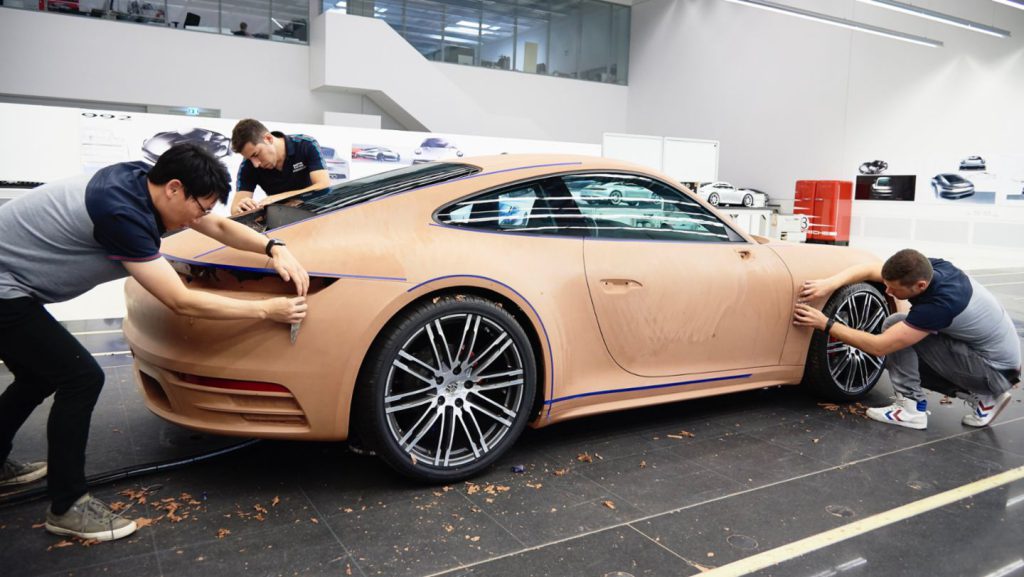
The Timeless Appeal of Pen and Paper
Despite the prevalence of digital tools, the design process at Porsche still begins with the humble pen and paper. Sketching remains a vital part of the early design phase, where ideas are brought to life in a raw, unrestricted manner.
These sketches are essential for brainstorming and capturing the initial vision of a new car model. The tactile experience of drawing allows designers to think freely, explore various concepts, and make quick adjustments, laying the foundation for what will eventually become a Porsche vehicle.
The Clay Model: Bringing Concepts to Life
Once a design concept has been sketched out, the next step involves creating a clay model. Clay modeling has been a mainstay in automotive design for decades, and it remains indispensable at Porsche.
The physicality of working with clay allows designers to experiment with shapes, surfaces, and proportions in a way digital modeling cannot fully replicate.
The malleable nature of clay makes it ideal for sculpting the complex concave and convex forms characteristic of Porsche’s design language.
Clay models provide a tangible representation of the vehicle, allowing designers to evaluate the design from every angle. They can touch, feel, and see the play of light and shadow on the surfaces, making it easier to refine and perfect the design.
This hands-on approach is crucial for ensuring every line and curve meets Porsche’s high standards of aesthetics and performance.
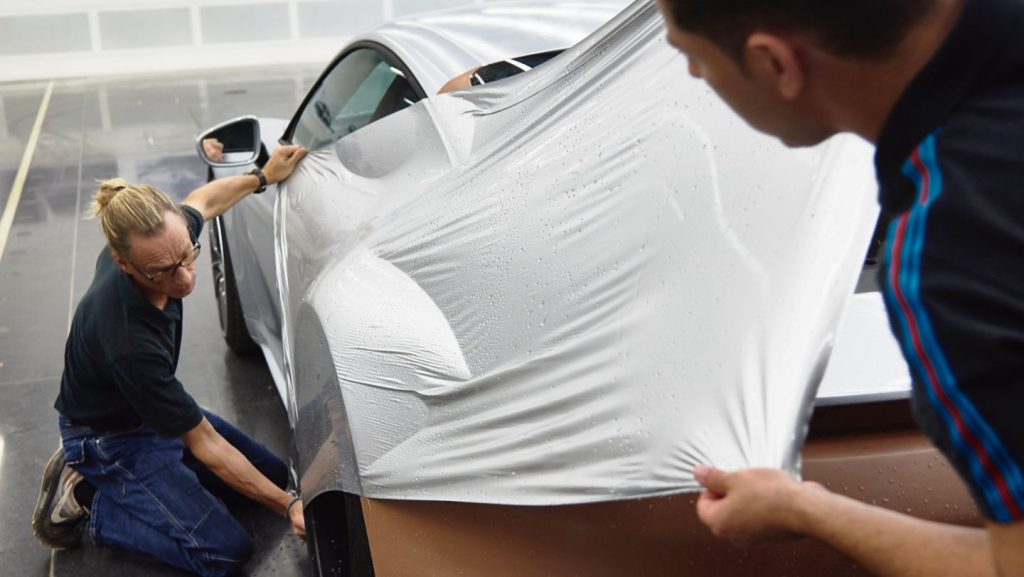
Embracing Digital Innovation: Virtual Design at Porsche
While traditional methods like clay modeling are still fundamental, Porsche has not shied away from embracing digital innovation. The company employs state-of-the-art software, often borrowed from the gaming and architectural sectors, to enhance the design process. Virtual reality (VR) and photorealistic simulations allow designers to visualize and manipulate designs in a digital environment.
Using advanced VR tools, designers can immerse themselves in a virtual version of the car. They can experiment with different design elements, colors, and materials, and see how the car would look in various settings, all without creating a physical prototype.
This capability speeds up the design process and opens up new possibilities for creativity and experimentation.
The Powerwall: A Digital Canvas for Collaboration
One of the standout features of Porsche’s digital design process is the Powerwall—a massive, high-resolution screen which serves as a digital canvas.
Measuring 16.5 meters wide, the Powerwall allows designers to present their concepts at full scale, creating an immersive experience akin to viewing a movie on a cinema screen. This tool is invaluable for collaborative design sessions, enabling the team to evaluate and critique designs in real-time.
The Powerwall also facilitates the comparison of new designs with existing models, ensuring continuity and consistency across Porsche’s product lineup.
It enables designers to assess the impact of various design elements on the overall aesthetic and make informed decisions about the final design.

From Digital to Physical: The Interplay Between Analogue and Digital
At Porsche, the transition from digital to physical is not a one-way street. There is a continuous interplay between the two realms, where digital models inform the creation of physical prototypes, and vice versa.
For example, digital data from virtual models can be transferred to clay models using advanced scanning and shaping technologies. Conversely, clay models can be digitized using photogrammetry, allowing their forms to be further refined in the digital space.
This back-and-forth process ensures the final design is thoroughly vetted and perfected. It allows designers to experiment with different iterations, fine-tuning the design until it meets Porsche’s rigorous standards. The result is a car visually stunning, aerodynamically efficient, and ergonomically sound.
The Role of Mixed Reality: Bridging the Gap
Porsche’s use of mixed reality (MR) applications is another example of how the company blends digital and physical experiences. MR technology enables designers to interact with virtual models while using real-world objects, creating a seamless integration of the two.
For instance, in Porsche’s modular VR seat model, physical components like the seat and steering wheel can be adjusted to match the virtual car’s dimensions.
When a designer or test subject puts on VR goggles, they experience a realistic simulation of the vehicle’s interior, allowing them to evaluate the design’s ergonomics and user experience.

The Design Studio: A Hub of Creativity
Porsche’s design studio in Weissach is where the magic happens. Opened in 2014, the studio is designed to foster collaboration and creativity. The architectural layout promotes transparency and communication, allowing the design team to work closely with other departments such as the flow test rig and concept construction teams.
This interdisciplinary approach ensures the design process is holistic, taking into account aesthetics, engineering, and manufacturing considerations.
The studio houses around 150 design professionals, including designers, modelers, and engineers. Each team member plays a vital role in bringing a new Porsche model to life, from the initial sketches to the final production-ready design.
The Importance of Physical Prototypes
Even in an age of digital design, physical prototypes remain crucial at Porsche. Before the final design freeze, life-sized clay models are subjected to rigorous testing and evaluation.
These models are often taken outside into Porsche’s expansive, private yard, where they can be viewed under natural lighting conditions. This setting allows designers to see how the car interacts with its surroundings, ensuring it looks just as good on the road as it does in the studio.
Physical prototypes also play a key role in aerodynamic testing. Porsche’s commitment to performance means every design must meet strict aerodynamic criteria. By testing physical models in wind tunnels, Porsche can make precise adjustments to improve airflow and reduce drag, ultimately enhancing the car’s speed and efficiency.
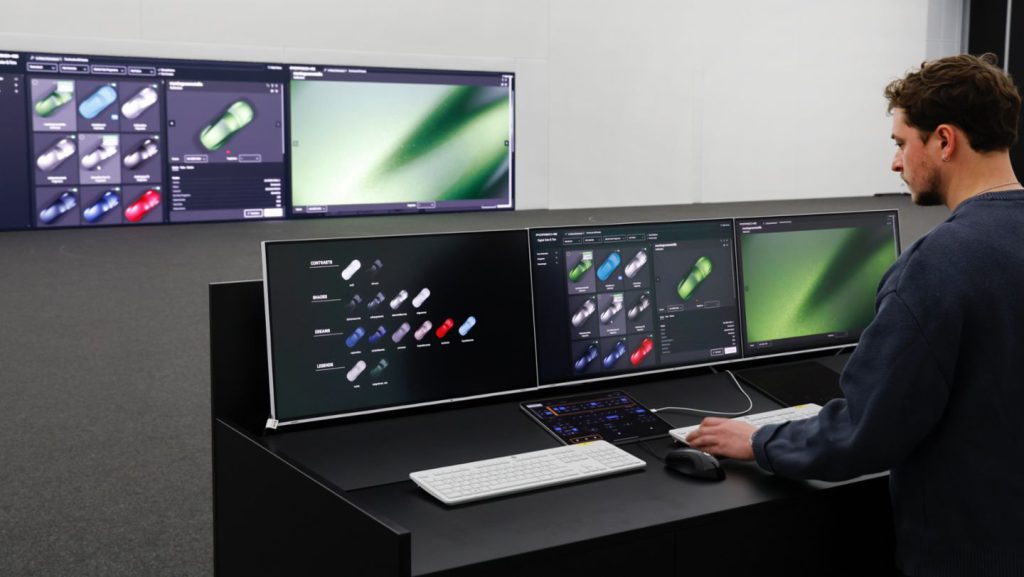
The Future of Porsche Design: Continuing the Hybrid Approach
As technology continues to evolve, so too will Porsche’s design process. The company is committed to staying at the forefront of innovation, continually exploring new tools and techniques to enhance its design capabilities.
However, Porsche also recognizes the enduring value of traditional methods. The tactile feedback and creative freedom offered by sketching and clay modeling are irreplaceable, providing a level of nuance and detail digital tools cannot fully replicate.
By maintaining this hybrid approach, Porsche ensures its designs remain true to the brand’s heritage while embracing the future. This balance of tradition and technology sets Porsche apart, enabling the company to create cars which are technologically advanced and timelessly beautiful.
Conclusion: The Power of Combining Tradition and Innovation
Porsche’s hybrid design process is a testament to the power of combining tradition with innovation. By embracing both analogue and digital methods, Porsche is able to create vehicles which push the boundaries of design while maintaining the brand’s iconic aesthetic.
This approach allows Porsche to stay ahead of the curve, continuously setting new standards in the automotive industry.
Whether it’s the classic pen and paper, the tactile clay model, or the immersive virtual reality experience, each tool plays a crucial role in bringing Porsche’s vision to life.
As Porsche continues to innovate, its commitment to quality and excellence remains unwavering, ensuring every new model is a masterpiece of design and engineering.


